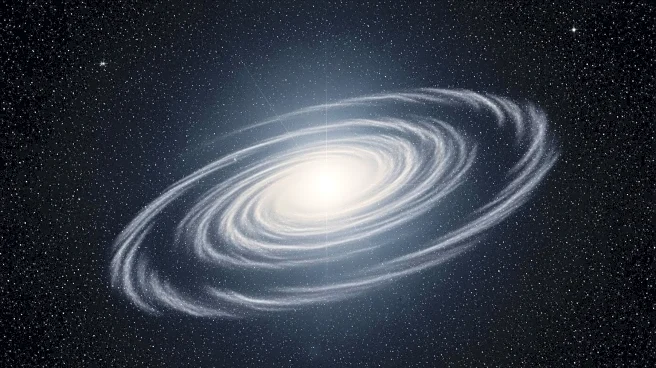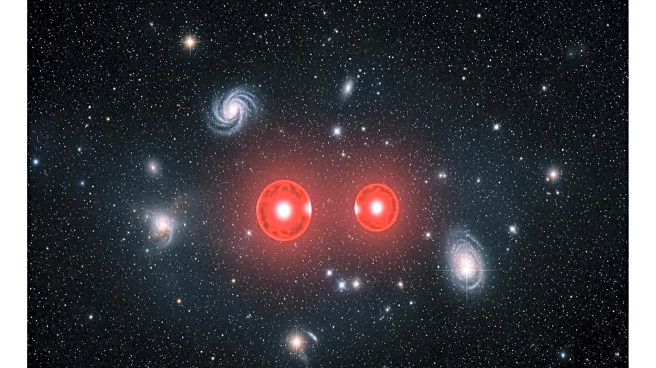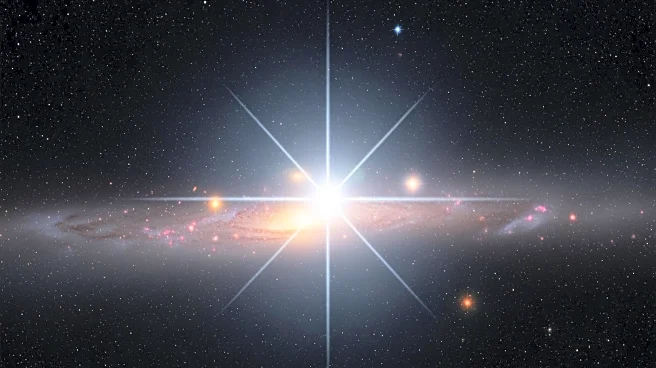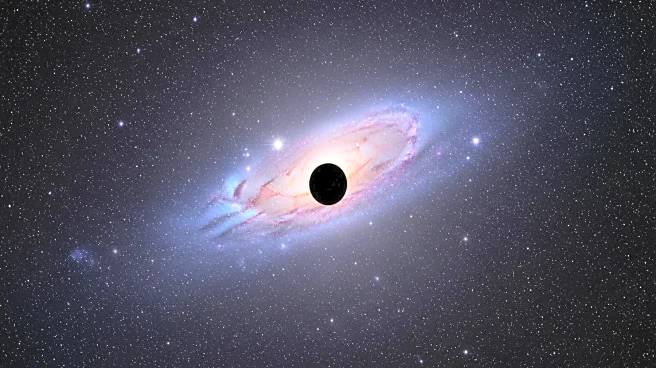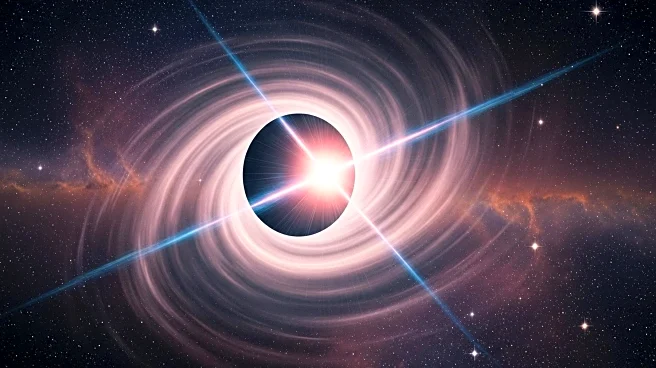What's Happening?
Astronomers have observed the earliest stages of planet formation around a young star named HOPS-315, located approximately 1,300 light years away. Using the James Webb Space Telescope and the Atacama
Large Millimeter/submillimeter Array, researchers identified the initial solidification of minerals close to the star, marking the first steps in planet building. This discovery captures the formation of rocky building blocks, a stage previously theorized but never directly observed so near a star. The observations pinpoint these solids within roughly 2.2 astronomical units of HOPS-315, a region comparable to the inner solar system. This area is where temperatures drop enough for certain minerals to condense, providing a natural setting to witness the emergence of solid matter.
Why It's Important?
The observation of planet formation around HOPS-315 is significant as it provides a live laboratory to test theories about how dust transforms into rocks and eventually planets. This finding narrows the gap between theoretical models and actual measurements, offering insights into the early stages of planet formation. The data suggest that similar processes may occur in other young star systems, potentially making the early steps toward rocky planets a common occurrence. Understanding these processes is crucial for explaining how Earth-like planets emerge and could influence future research in planetary science and astronomy.
What's Next?
Astronomers plan to expand their search to more young stars to determine if the early signatures observed around HOPS-315 are routine. Repeated observations of HOPS-315 will help track changes in the gas-to-solid ratio and reveal the speed at which grains transition from dust to rock. Future data will test whether heat processing is common across the galaxy and if inner disc condensation consistently occurs at similar distances from stars. This research sets a benchmark for models aiming to explain planet assembly and could lead to a deeper understanding of planet formation processes.
Beyond the Headlines
The study of HOPS-315 offers a direct view of processes similar to those that occurred in our solar system, providing a coherent story of inner disc condensation, mixing, and collision-driven growth of rocky pieces. This research could have long-term implications for understanding the formation of Earth-like planets and the conditions necessary for their development.
